Temples are places of worship and devotion for many people around the world. They are also symbols of cultural heritage, architectural beauty and historical significance. Some temples are so large and rich that they have amassed enormous wealth over the centuries, making them among the most valuable religious sites in the world. Here is a list of the top 10 richest temples in the world, based on their estimated net worth.
10. Shree Siddhivinayak Temple, India
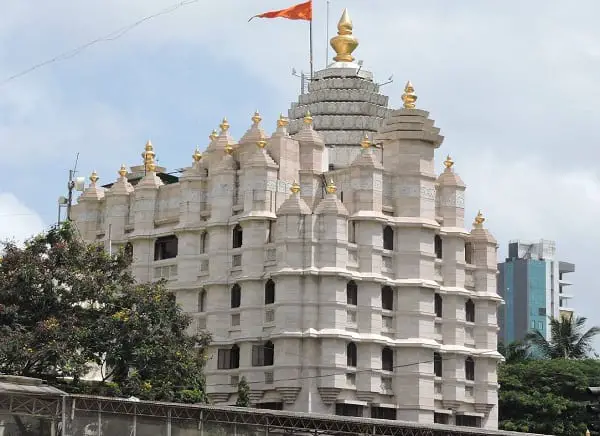
The Shree Siddhivinayak Ganapati Temple in Mumbai, Maharashtra, is one of the most revered and wealthiest Hindu temples in India. Dedicated to Lord Ganesha, the elephant-headed deity known as the Remover of Obstacles and the God of Wisdom, the temple is a major pilgrimage site attracting millions of devotees annually, especially during the Ganesh Chaturthi festival.
Located in the Prabhadevi area of Mumbai, the Siddhivinayak Temple was originally constructed on 19 November 1801 by contractor Laxman Vithu Patil. The temple’s construction was financially supported by Shreemati Deubai Patil, a devout and childless woman who hoped her contribution would bless other women with children.
The original temple was a modest structure, but over the centuries, it has undergone significant expansion and renovation. Today, the temple complex features a striking six-storey building adorned with 37 domes, including a prominent gold-plated central dome, making it a prominent landmark in Mumbai.
The main idol of Lord Ganesha is carved from a single block of black stone and showcases the deity with four arms, a right-curved trunk, and flanked by his divine consorts, Riddhi and Siddhi. Contrary to some reports, the idol is not made of silver and is not encrusted with jewels, maintaining its sacred traditional form.
As of the financial year 2024–25, the Siddhivinayak Ganapati Temple Trust reported an annual income of approximately ₹133 crore INR (around $16 million USD). Though widely recognized for its wealth, the temple’s estimated net worth is generally believed to be under $100 million. The trust allocates a significant portion of its revenue towards charitable programs, particularly in education, healthcare, and community development.
With its rich history, spiritual significance, and modern-day philanthropy, the Shree Siddhivinayak Temple stands as a symbol of faith, devotion, and social service in contemporary India.
9. Shrine of Lourdes, France
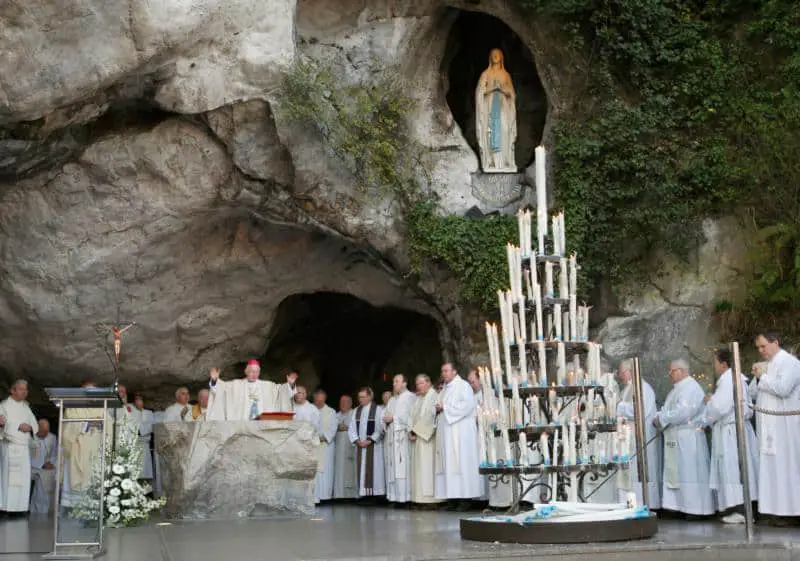
The Sanctuary of Our Lady of Lourdes, also known as the Shrine of Lourdes, is a globally renowned Catholic pilgrimage site located in Lourdes, France. It is famously recognized as the place where the Virgin Mary is believed to have appeared to Saint Bernadette Soubirous, a 14-year-old peasant girl, in a series of Marian apparitions that began on February 11, 1858 at the Grotto of Massabielle. This makes it one of the oldest catholic holy places in the world.
Today, the Sanctuary spans over 52 hectares and includes several major religious landmarks, such as:
- The Grotto of the Apparitions, where pilgrims pray and collect Lourdes water
- The Basilica of the Immaculate Conception (Upper Basilica)
- The Basilica of Our Lady of the Rosary
- The Basilica of St. Pius X (an underground basilica)
- The Rosary Square, fountains, baths for ritual immersion, and several chapels
- Extensive processional esplanades for candlelight processions and Mass celebrations
Each year, between 4 to 6 million pilgrims from more than 150 countries visit Lourdes to attend Mass, participate in candlelight processions, light devotional candles, and immerse themselves in or collect Lourdes spring water, which is reputed for its miraculous healing properties.
Since the first apparition, Lourdes has welcomed over 200 million pilgrims. As of 2025, the Catholic Church has officially recognized 72 miraculous healings attributed to the waters of Lourdes—validated through strict medical and theological evaluations by the Lourdes Medical Bureau and the International Medical Committee of Lourdes (CMIL).
Lourdes Water and Miracles
The spring water that flows from the Grotto is central to the Lourdes experience. Though it contains no special chemical properties, countless pilgrims testify to its spiritual and physical healing effects. Many collect Lourdes water to bring home, while others bathe in the Sanctuary’s immersion pools, hoping for divine healing.
Sanctuary Operations and Donations
The Sanctuary of Our Lady of Lourdes is entirely funded by private donations from visitors, pilgrims, and benefactors. It receives no financial support from the Vatican or the French government. While its annual operational budget is substantial—used for maintenance, pastoral care, hospitality, and religious events—there are no publicly verified figures supporting claims that its net worth exceeds $200 million USD.
8. Temple of the Tooth, Sri Lanka
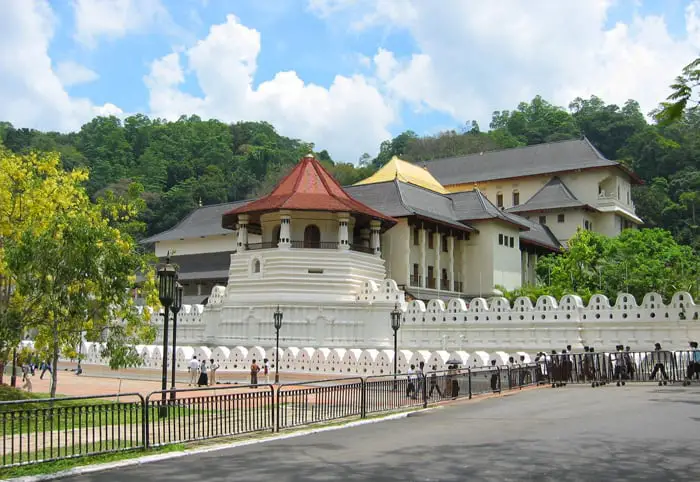
The Temple of the Sacred Tooth Relic, locally known as Sri Dalada Maligawa, is a revered Buddhist temple located in Kandy, Sri Lanka. It enshrines one of the most sacred relics in Buddhism—a tooth believed to have belonged to Gautama Buddha. This relic has immense religious, cultural, and historical significance, drawing millions of pilgrims and tourists annually.
The temple was originally constructed by King Vimaladharmasuriya I in the late 16th century. Over the centuries, it has been destroyed and rebuilt multiple times. The current two-story structure dates to the early 18th century, developed under King Sri Veera Parakrama Narendrasinghe, with further architectural enhancements contributed by successive Kandyan monarchs.
The temple is part of a larger historical and cultural complex that includes the Royal Palace of Kandy, Kandy National Museum, an octagonal pavilion (Pattirippuwa), and a library, all showcasing traditional Kandyan architecture.
The Sacred Tooth Relic is enshrined in the temple’s inner sanctum, placed on a golden lotus flower and protected within a series of seven golden caskets adorned with jewels, beneath a golden canopy added in 1987. The shrine’s interior is intricately decorated with gold, silver, bronze, and ivory, reflecting centuries of artistic devotion and craftsmanship.
As one of Sri Lanka’s most significant religious sites, the Temple of the Sacred Tooth Relic receives substantial donations from local and international devotees as well as religious tourists. It is considered one of the wealthiest temples in Sri Lanka, although no verified public estimate exists regarding its total net worth.
7. Santuari del Santuari de Meritxell, Andorra
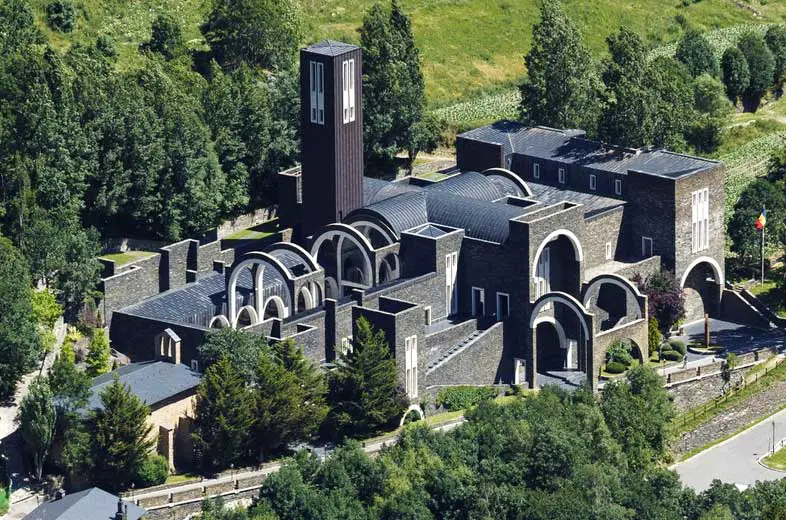
The Santuari de Meritxell, located in Andorra, is a national religious site dedicated to Our Lady of Meritxell, the patron saint of Andorra. The sanctuary is built on the historic site of a 12th-century Romanesque chapel, which was later reconstructed in Baroque and Gothic architectural styles over the centuries.
Following the destruction of the original sanctuary by fire in 1972, the present-day structure was commissioned and redesigned by renowned Catalan architect Ricardo Bofill. The new Santuari de Meritxell was inaugurated between 1976 and 1978, featuring a distinctive Greek cross layout, semicircular arches, rib-vaulted cloisters, and a modern interpretation of the original wooden statue of the Virgin and Child.
The sanctuary is the spiritual centerpiece of Andorra’s National Day, celebrated each year on September 8, drawing thousands of pilgrims and visitors to honor the Virgin of Meritxell. The site is sustained through religious donations and government funding, serving as a symbol of Andorran cultural identity and Catholic devotion.
Despite occasional claims, there are no credible sources confirming that the Santuari de Meritxell holds a net worth of $400 million or that it ranks among the wealthiest shrines in Europe.
6. Sai Baba of Shirdi Temple, India
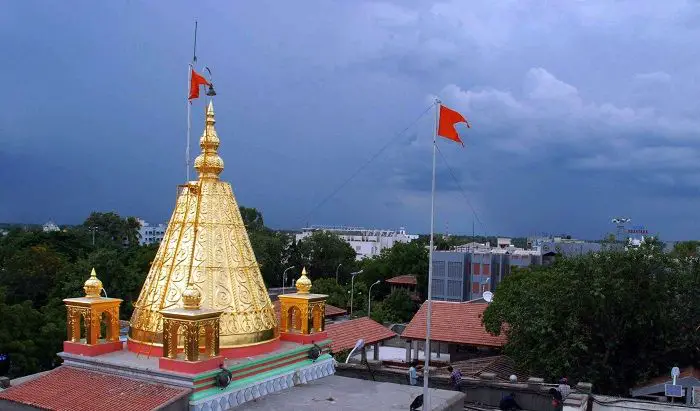
The Sai Baba of Shirdi Temple, located in Shirdi, Maharashtra, India, is a revered Hindu pilgrimage site dedicated to Sai Baba of Shirdi, a 19th-century spiritual master known for his teachings on universal love, religious tolerance, and unity among faiths. Sai Baba attained mahasamadhi in 1918, and the temple was established in 1922 at the site of his samadhi (burial place).
The temple complex features a prominent marble idol of Sai Baba, seated on a throne surrounded by silver pillars, lamps, and traditional ornamental decor. A museum within the temple premises displays Sai Baba’s personal belongings, clothing, and archival photographs, offering insight into his life and legacy.
Each year, millions of devotees from across India and around the world visit the Shirdi Sai Baba Temple to offer prayers, seek blessings, and participate in daily rituals and aartis. The temple receives substantial donations from devotees, reinforcing its status as one of the wealthiest temples in India. However, there is no officially verified valuation confirming claims of a $500 million net worth.
5. Harmandir Sahib (Golden Temple), India
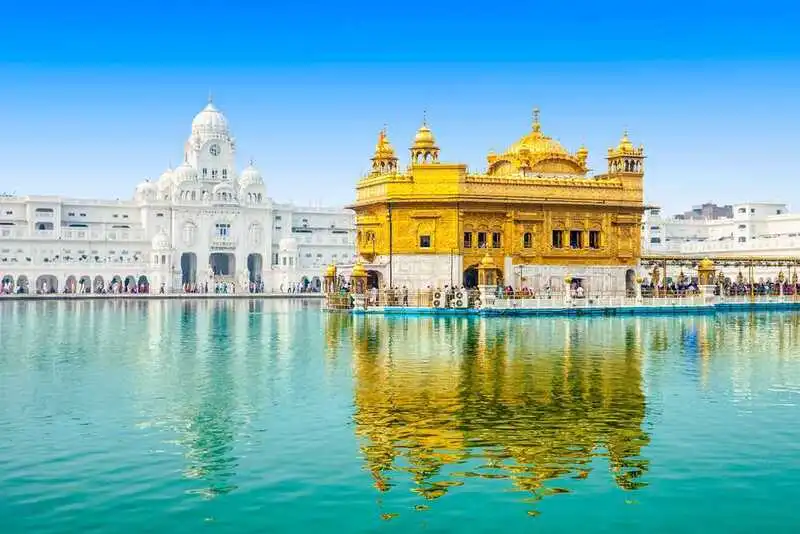
The Harmandir Sahib, commonly known as the Golden Temple, is the most sacred Gurdwara and spiritual center of Sikhism, located in Amritsar, Punjab, India. The shrine was founded by Guru Ram Das, the fourth Sikh Guru, in the late 16th century, and its construction was completed by Guru Arjan Dev in 1604.
Architecturally unique, the Golden Temple features entrances on all four sides, symbolizing openness to people of all castes, religions, and backgrounds. The temple is intentionally constructed at a lower level than its surroundings to represent humility, a core value in Sikh teachings.
The shrine’s most iconic feature—the gold-plated dome—was added in the early 19th century under the patronage of Maharaja Ranjit Singh, giving the temple its globally recognized appearance. The structure is built on a base of white marble and is surrounded by the Amrit Sarovar, a sacred pool of water believed by devotees to have purifying and spiritual significance.
The Harmandir Sahib is also renowned for its langar (community kitchen), which serves free meals daily to thousands of visitors, regardless of religion, caste, or economic status. This tradition reflects the Sikh principles of seva (selfless service) and equality.
4. Tirumala Tirupati Venkateswara Temple, India
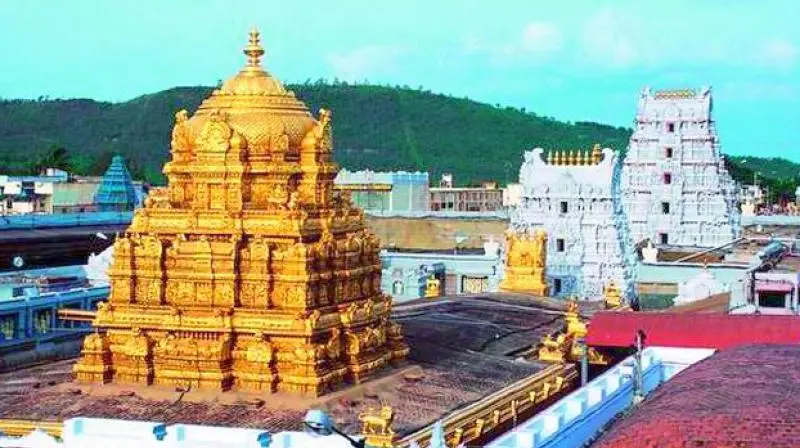
The Tirumala Tirupati Venkateswara Temple, situated on the Tirumala Hills in Andhra Pradesh, India, is a renowned Hindu temple dedicated to Lord Venkateswara, a manifestation of Lord Vishnu. Positioned at an elevation of approximately 853 meters, this large hindu temple is one of the most visited religious pilgrimage destinations in the world, drawing over 50 million devotees annually.
The temple’s historical origins trace back to the early medieval period, with significant architectural and cultural contributions made by various South Indian dynasties, including the Pallavas, Cholas, Pandyas, and most notably, the Vijayanagara Empire. These successive dynasties helped shape the temple’s grandeur through centuries of development rooted in Dravidian temple architecture.
The sanctum sanctorum houses a revered black stone idol of Lord Venkateswara, richly adorned with gold ornaments and precious jewels. Above the sanctum rises the temple’s iconic gold-plated tower, known as Ananda Nilayam, a key visual and spiritual symbol of the temple complex. The temple is also noted for its impressive gopurams (temple towers) and intricately carved stone pillars, hallmarks of traditional South Indian temple architecture.
Recognized not only for its spiritual significance but also for its immense economic contributions, the Tirumala Tirupati Venkateswara Temple receives vast donations in the form of cash, gold, silver, and other valuable offerings from devotees. It also owns substantial land and property assets across different regions of India.
A unique and deeply symbolic ritual practiced here is hair tonsuring, where pilgrims offer their hair as a mark of devotion and surrender to Lord Venkateswara.
3. Temple of Heaven, China (estimated net worth: $11 billion)
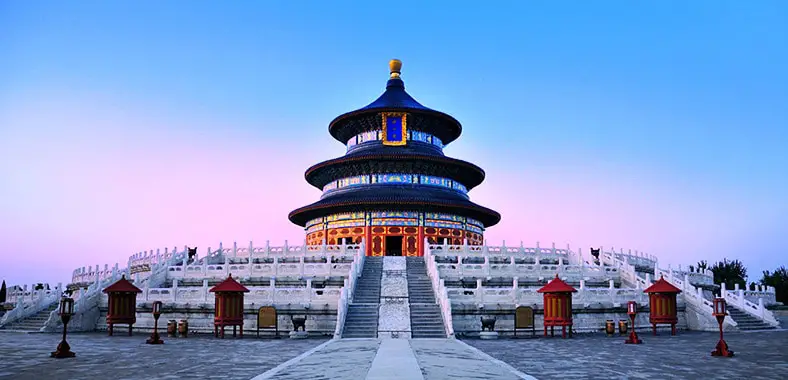
The Temple of Heaven (Tiantan), located in Beijing, China, is a vast and historically significant complex of ancient religious structures constructed between 1406 and 1420 during the reign of Emperor Yongle of the Ming Dynasty. Spanning approximately 2.73 square kilometers, the temple was used by emperors from both the Ming and Qing dynasties to conduct annual sacrificial ceremonies dedicated to Heaven, seeking divine blessings for good harvests.
The architectural layout of the Temple of Heaven complex is deeply symbolic, representing the cosmological principles of harmony between Heaven and Earth. Circular structures such as temples represent Heaven, while square precincts symbolize Earth—a design that reflects the ancient Chinese belief in the connection between natural and celestial forces.
Key architectural landmarks within the complex include the Hall of Prayer for Good Harvests, the Circular Mound Altar, and the Imperial Vault of Heaven. These monumental structures are aligned along a central north-south axis, emphasizing their ceremonial and spiritual significance.
Celebrated for its traditional wooden architecture, the Temple of Heaven showcases masterful craftsmanship, intricate detailing, and precise alignment rooted in ancient Chinese cosmology. The site underwent its last major renovation during the 18th century and remains a UNESCO World Heritage Site, recognized for its cultural, religious, and architectural importance. Today, it stands as a major historical and cultural landmark in Beijing, attracting millions of visitors and scholars from around the world.
2. Wat Phra Kaew, Thailand (estimated net worth: $15 billion)
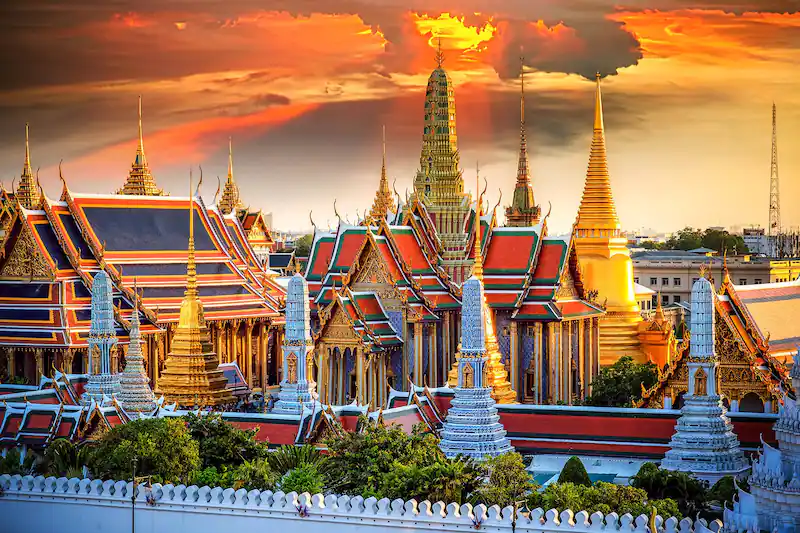
Wat Phra Kaew, also known as the Temple of the Emerald Buddha, is the most sacred Buddhist temple in Thailand, located within the Grand Palace complex in Bangkok. Construction of the temple began in 1783 under the reign of King Rama I, the founder of the Chakri Dynasty. It was established to enshrine the revered Emerald Buddha, a highly venerated statue carved from a single block of jade, considered the spiritual protector of Thailand and a powerful symbol of the Thai monarchy’s deep connection to Theravāda Buddhism.
The temple complex is renowned for its elaborate decoration, featuring traditional Thai architecture richly adorned with gold leaf, precious stones, and colorful glass mosaics. The intricate detailing and sacred artistry reflect both religious devotion and royal patronage.
A central ritual at Wat Phra Kaew is the ceremonial changing of the Emerald Buddha’s garments, performed personally by the King of Thailand three times a year to mark the changing of the seasons—summer, rainy, and winter. This ritual underscores the monarchy’s ceremonial role in maintaining religious tradition.
Wat Phra Kaew plays an essential role in royal ceremonies and remains the spiritual heart of Thailand, revered as a national religious symbol and a key site for both pilgrimage and tourism. Its historic, religious, and architectural significance make it one of the most important cultural landmarks in Bangkok and across the Thai nation.
1. Shree Padmanabhaswamy Temple, India (estimated net worth: $22 billion)
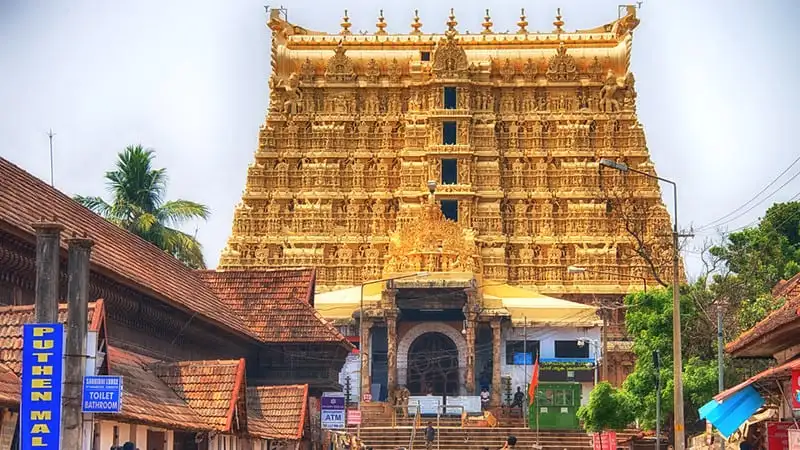
The Shree Padmanabhaswamy Temple, located in Thiruvananthapuram, the capital city of Kerala, India, is a historically significant and architecturally unique Hindu temple dedicated to Lord Vishnu, worshipped here in the rare Anantha Shayana (reclining) posture. The temple’s origins date back to at least the 8th century, and it showcases a unique blend of Kerala and Dravidian architectural styles.
A prominent feature of the temple is its towering 100-foot gopuram (temple tower) and its precision in aligning with solar and celestial events, reflecting ancient astronomical knowledge. The temple houses an 18-foot-long idol of Lord Padmanabhaswamy, made with thousands of sacred Salagrama stones, which hold immense religious significance in Vaishnavism.
The Travancore Royal Family has traditionally served as the custodians of the temple, following a centuries-old ritual in which the kingdom’s wealth and assets were ceremonially offered to the deity. This practice explains the temple’s vast land ownership and extraordinary wealth.
In 2011, the temple gained international attention following the discovery of immense treasures in its underground vaults, including gold ornaments, silver artifacts, diamonds, and priceless antique items, collectively valued in billions of dollars. One of the vaults, known as Vault B, remains unopened due to deep religious beliefs and spiritual considerations.
The Padmanabhaswamy Temple is also celebrated for its exquisite stone carvings, ancient murals, and architectural alignment with celestial phenomena, making it a revered spiritual site, a cultural treasure, and one of the richest temples in the world.
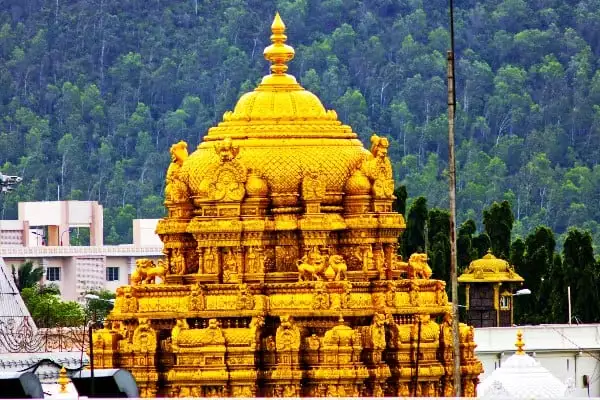
Give Golden temple its real name which is Harmander Sahib and it is a Gurdwara and not a temple.